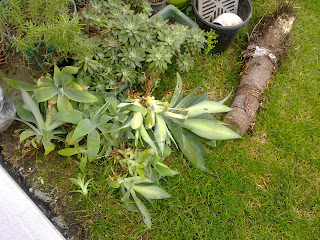i have seem to come across another of my mum's succulent plants, but this one has no medicinal properties that i would know of. instead, mum has kept this one because it is pretty and seem to look like a green singular flower on a stem.
 |
| in its pot, with the stem and the leaves |
this is know as an Aeonium.
it comes from the Crassulaceae family and is known to be a succulent shrub and can handle temperate to subtropical climates. it is an evergreen and tends to have colourful leaves, from black, red, pink and purple. it flowers during July and August and gives off yellow flowers.
it is said to originate from Morocco and can be very easily propagated just by taking a leaf or stem cutting.
it comes from the Crassulaceae family and is known to be a succulent shrub and can handle temperate to subtropical climates. it is an evergreen and tends to have colourful leaves, from black, red, pink and purple. it flowers during July and August and gives off yellow flowers.
it is said to originate from Morocco and can be very easily propagated just by taking a leaf or stem cutting.
 |
| smaller rosette of leaves forming in the middle of the plant |
it has grown from a small stem with a small rosette of green leaves making it seem like a flower and as the years have past, the stem has got longer and larger and well as the rosette of leaves. they have also grown to a larger size with more rosettes in the middle of the plant to continue to grow. this has been growing in a pot plant since we have had it and it seems to have been taking it time to grow. this plant is drought tolerant and also salt tolerant.
 |
| it is very green and vibrant |



















